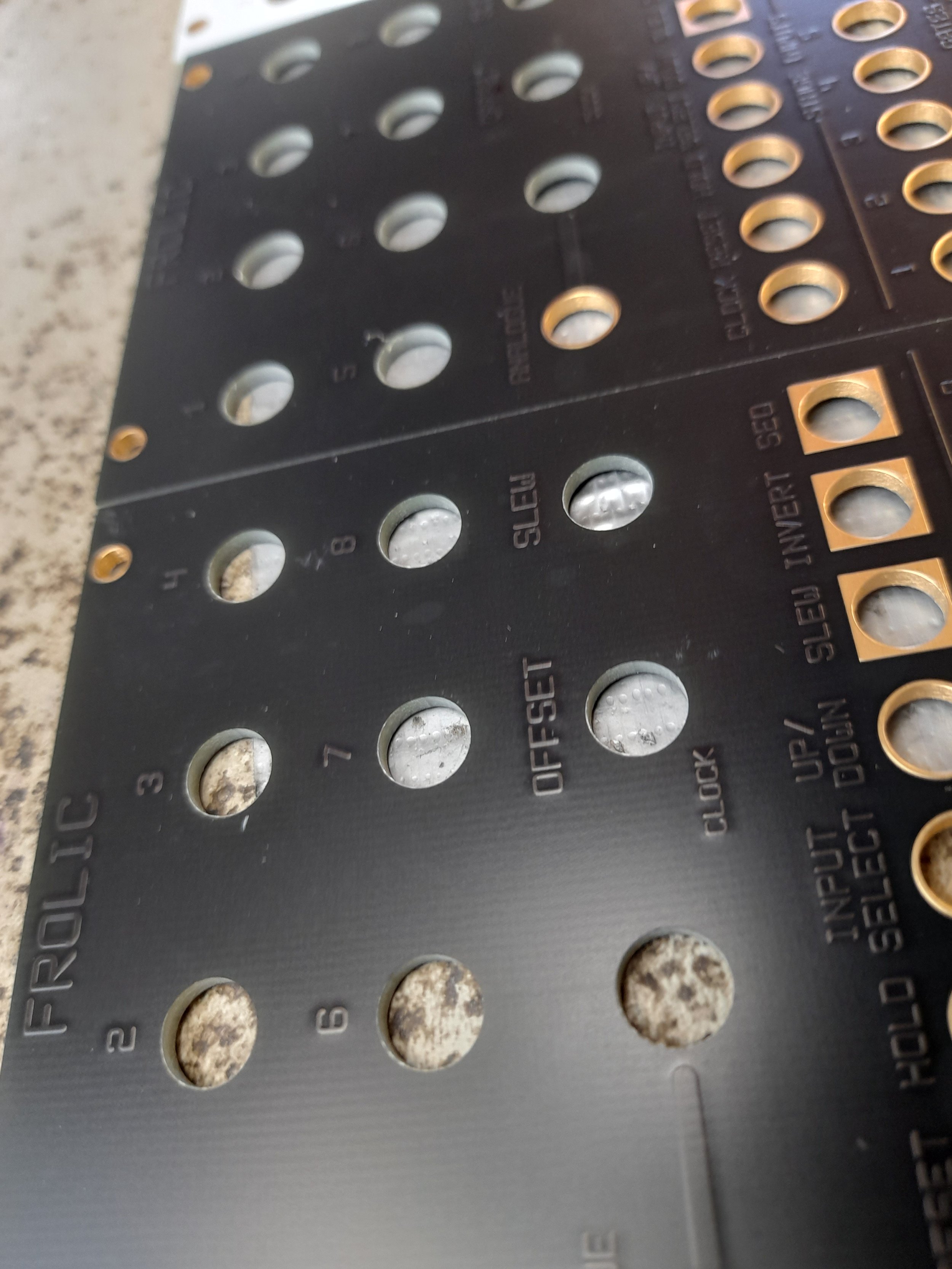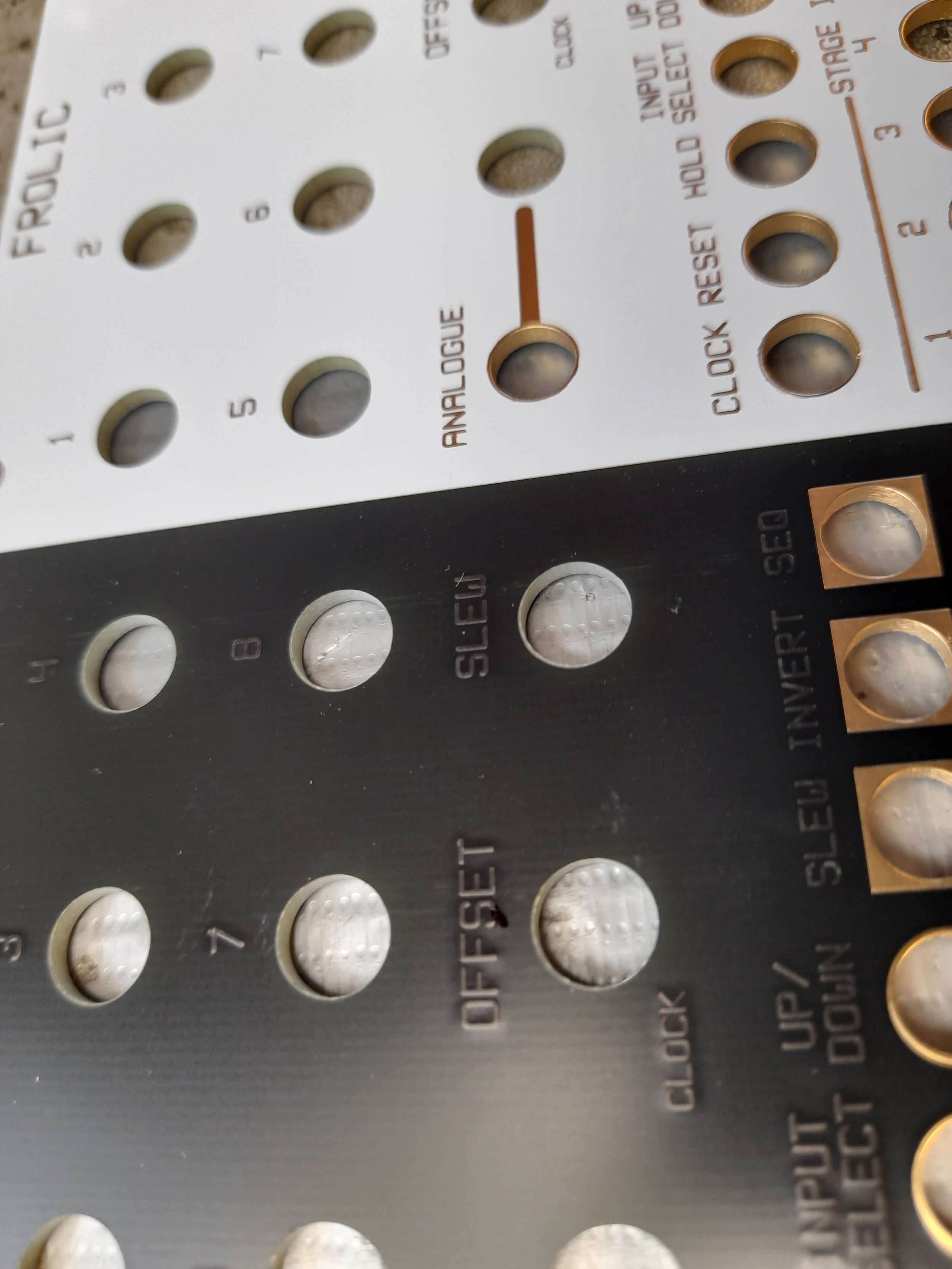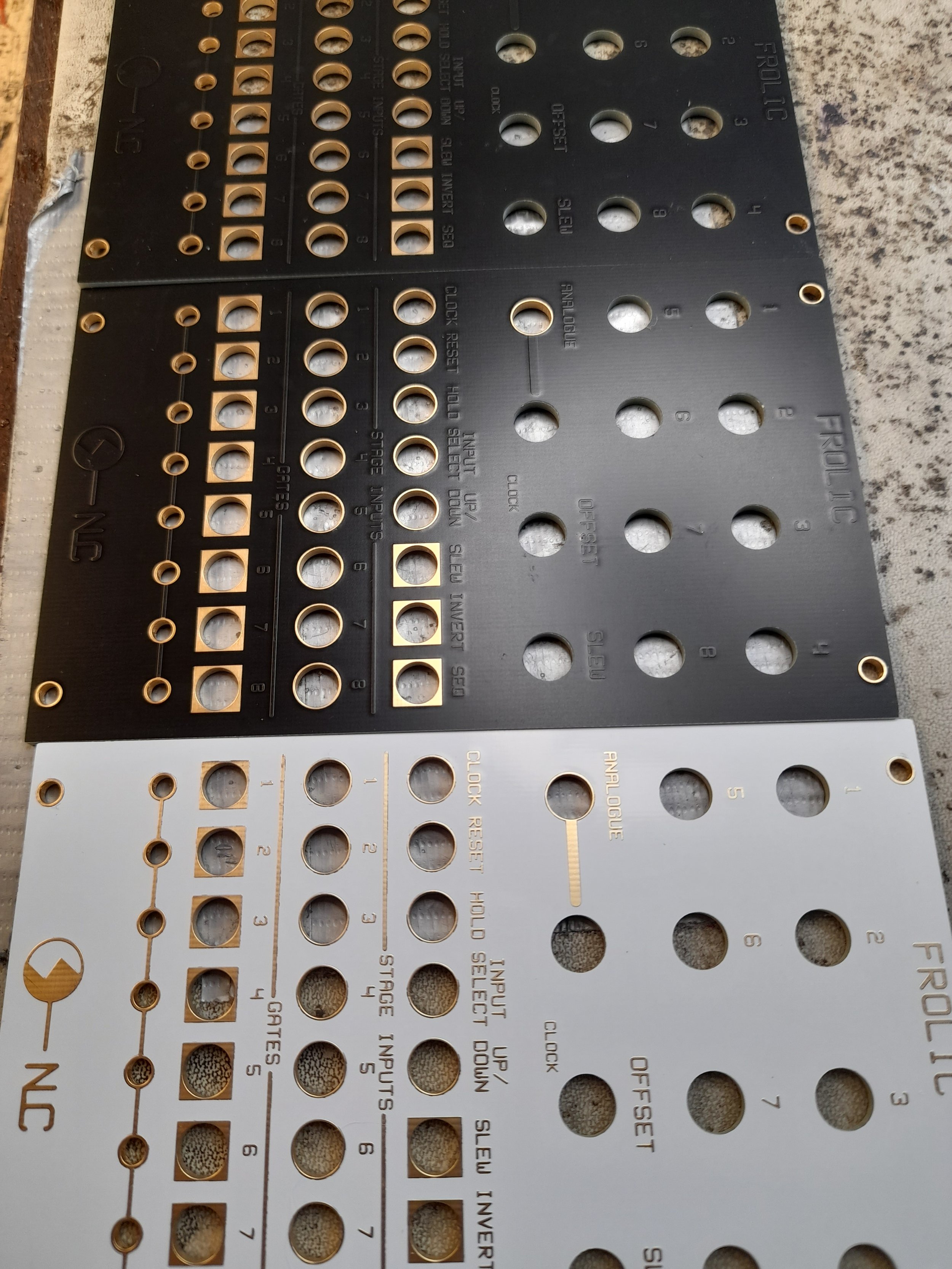Frolic
Description/Usage
16hp
This module is an 8 stage sequencer/sequential switch. The stages can be controlled by CV or by gates and triggers or both. Feel free to run it audio rates and do other things too.
The analogue (CV) input does need some setting up and there are 2 pots for doing this. The one connected to the analogue input jack is an attenuator. For a typical 5V range CV signal, you would probably set it around the mid-point; the input is sensitive to lower amplitude signals (such as some of the outputs from the Sloth modules). The 2nd pot is to give a positive offset to the incoming CV. Most LFO signals range over +/-5V, so this pot will adjust the signal to make it range from 0-10V, and then you would wind back the attenuator to get a nice motion between stages 1 and 8. It is a lot of fun feeding in complex signals, such as two LFO Tri waves mixed. For a Knightrider KIT effect, use a triangle wave and think about the wonderful things the Hoff has done over the years.
An important point – when using the clock input, the offset pot must be wound back to 0 or have a cable patched into the Input Select jack.
For regular sequencer functions, there are the clock, reset, hold & up/down inputs. There is also an input select jack, a high signal enables the analogue input, a low signal enables the clock input.
If nothing is patched into the stage inputs, the outputs will be a voltage for that stage, set by the corresponding pot. If you patch in a signal, the corresponding pot becomes an attenuator for that signal
Please note:
B stock black/gold panels have the labels covered by the soldermask, see pics…...stealth mode!.
Assembled modules are built to order. They will be ready to ship within 4 weeks of ordering.
DIY
Description/Usage
16hp
This module is an 8 stage sequencer/sequential switch. The stages can be controlled by CV or by gates and triggers or both. Feel free to run it audio rates and do other things too.
The analogue (CV) input does need some setting up and there are 2 pots for doing this. The one connected to the analogue input jack is an attenuator. For a typical 5V range CV signal, you would probably set it around the mid-point; the input is sensitive to lower amplitude signals (such as some of the outputs from the Sloth modules). The 2nd pot is to give a positive offset to the incoming CV. Most LFO signals range over +/-5V, so this pot will adjust the signal to make it range from 0-10V, and then you would wind back the attenuator to get a nice motion between stages 1 and 8. It is a lot of fun feeding in complex signals, such as two LFO Tri waves mixed. For a Knightrider KIT effect, use a triangle wave and think about the wonderful things the Hoff has done over the years.
An important point – when using the clock input, the offset pot must be wound back to 0 or have a cable patched into the Input Select jack.
For regular sequencer functions, there are the clock, reset, hold & up/down inputs. There is also an input select jack, a high signal enables the analogue input, a low signal enables the clock input.
If nothing is patched into the stage inputs, the outputs will be a voltage for that stage, set by the corresponding pot. If you patch in a signal, the corresponding pot becomes an attenuator for that signal
Please note:
B stock black/gold panels have the labels covered by the soldermask, see pics…...stealth mode!.
Assembled modules are built to order. They will be ready to ship within 4 weeks of ordering.
DIY
Description/Usage
16hp
This module is an 8 stage sequencer/sequential switch. The stages can be controlled by CV or by gates and triggers or both. Feel free to run it audio rates and do other things too.
The analogue (CV) input does need some setting up and there are 2 pots for doing this. The one connected to the analogue input jack is an attenuator. For a typical 5V range CV signal, you would probably set it around the mid-point; the input is sensitive to lower amplitude signals (such as some of the outputs from the Sloth modules). The 2nd pot is to give a positive offset to the incoming CV. Most LFO signals range over +/-5V, so this pot will adjust the signal to make it range from 0-10V, and then you would wind back the attenuator to get a nice motion between stages 1 and 8. It is a lot of fun feeding in complex signals, such as two LFO Tri waves mixed. For a Knightrider KIT effect, use a triangle wave and think about the wonderful things the Hoff has done over the years.
An important point – when using the clock input, the offset pot must be wound back to 0 or have a cable patched into the Input Select jack.
For regular sequencer functions, there are the clock, reset, hold & up/down inputs. There is also an input select jack, a high signal enables the analogue input, a low signal enables the clock input.
If nothing is patched into the stage inputs, the outputs will be a voltage for that stage, set by the corresponding pot. If you patch in a signal, the corresponding pot becomes an attenuator for that signal
Please note:
B stock black/gold panels have the labels covered by the soldermask, see pics…...stealth mode!.
Assembled modules are built to order. They will be ready to ship within 4 weeks of ordering.



